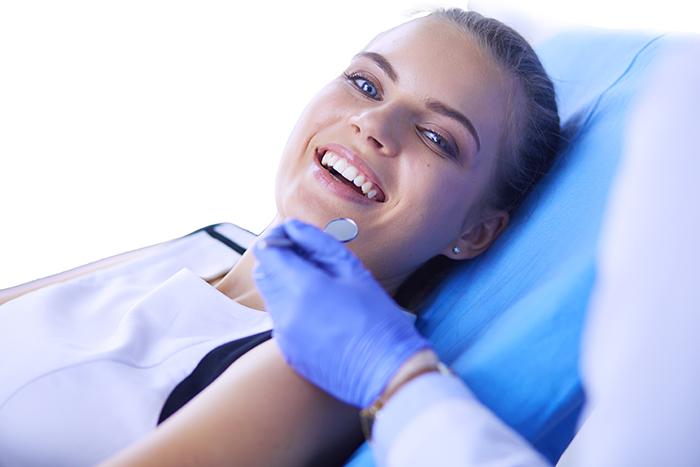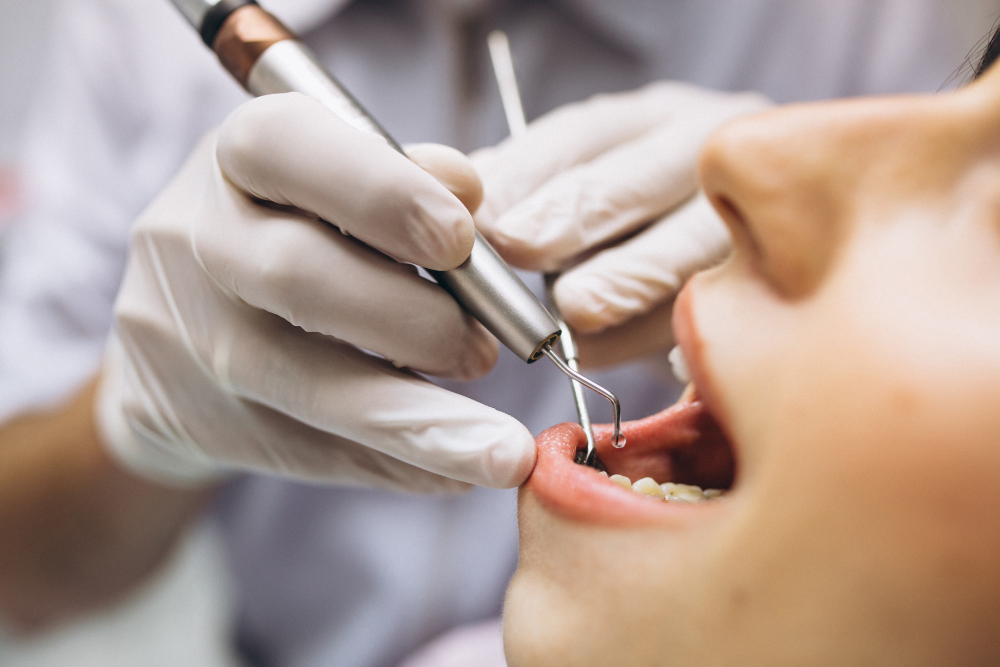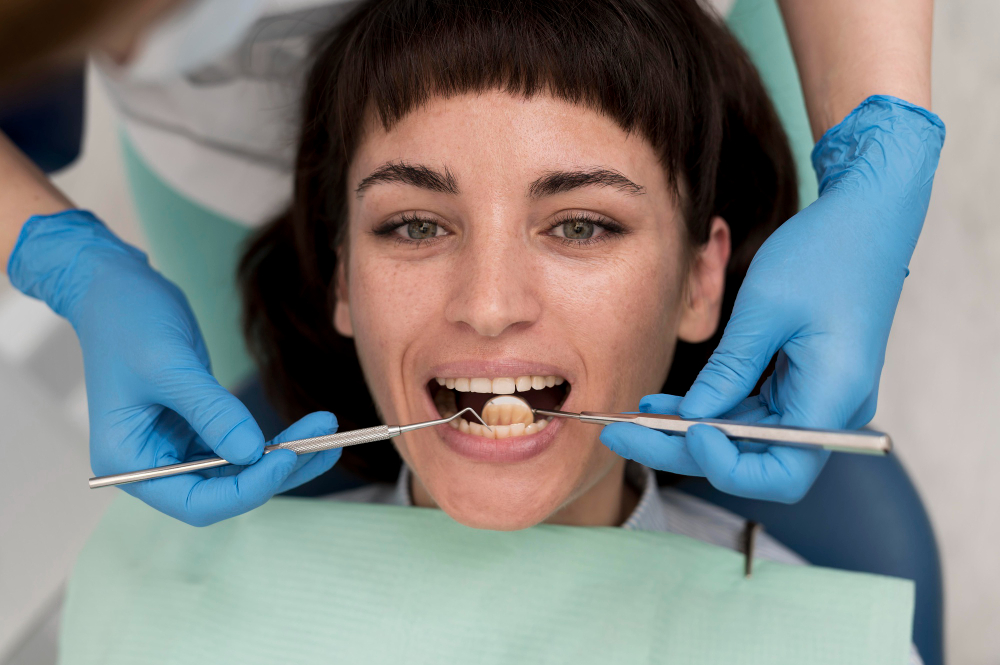Gum Grafting Seattle | Advanced Care with Dr. Javadi

Have your teeth started feeling more sensitive lately? Or has your smile started looking a little different? These are common signs of gum recession, a condition where the gum tissue pulls back, exposing the roots. If left untreated, it can lead to serious dental issues, including tooth loss.
At Orchid Periodontics & Dental Implants, patients in Seattle trust Dr. Ellie Javadi for expert gum grafting that helps restore and protect their smiles. With two decades of surgical experience and recognition as a Seattle Met Top Dentist for 2025, she provides personalized care with a focus on comfort and lasting results.
She uses advanced cone-beam CT scans, delicate microstructures, and your choice of IV or oral sedation to ensure accurate results with minimal recovery time. So, you can get back to everything you love, whether it’s your morning coffee, a weekend hike, or just smiling with confidence.
What Causes Gum Recession?

Gum recession often goes unnoticed because it develops gradually over time. Years of brushing too hard, skipping treatment for gum disease, or even things out of your control, like genetics or past orthodontic work, can slowly cause the gums to recede. As that tissue wears down, more of the tooth becomes exposed, leading to sensitivity and a higher risk of damage.
You may be noticing signs like:
- Sensitivity to hot, cold, or sweet foods
- Uneven gum lines showing up in photos
- The gum inflammation that sticks around after cleanings
- Visible dips or grooves along the gum line
Gum Grafting Options in Seattle

At Orchid Periodontics & Dental Implants, Dr. Javadi offers two reliable gum grafting techniques. The recommended method depends on how far the gum recession has progressed and how much of the tooth root needs to be covered. In this procedure, a narrow strip of dense tissue is carefully taken from the palate and placed over the thinning area. This strengthens the gumline, improves tissue resilience, and helps prevent further loss of gum coverage.
Soft Tissue Graft for Root Exposure
When the recession is more advanced and the root surface is visible, or multiple teeth are involved, a soft tissue graft may be required. This technique uses either the patient’s connective tissue or a processed donor graft to restore coverage. The graft is placed over the exposed roots to protect against sensitivity, reduce plaque accumulation, and help preserve long-term stability.
Both procedures are performed under local anesthesia, with sedation options available. Microsurgical sutures are used to secure the graft precisely and support faster, more comfortable healing.
What to Expect During a Gum Graft Procedure
Before beginning treatment, Dr. Javadi conducts a thorough clinical evaluation and reviews digital imaging to gain a comprehensive understanding of your gum condition. You’ll be guided through all available grafting options, with a clear explanation of why a particular technique is most appropriate for your case.
- Anesthesia: The procedure begins with a localized anesthetic to fully numb the area. A small, precise opening is then made to prepare for the graft.
- Tissue harvesting or donor preparation: Depending on your treatment plan, either a very thin layer of your tissue is gently collected from the palate, or a pre-screened donor graft is selected to match your clinical needs.
- Graft placement: The graft is carefully placed to match the specific contours of your gum recession and is gently secured over the exposed root surface using ultra-fine sutures designed to minimize swelling and encourage faster healing.
- Post-treatment instructions and support: Before you leave, you’ll receive detailed guidance on oral rinsing, dietary precautions, and a direct contact number to reach your provider if any concerns arise during recovery.
Most procedures are completed within 60 to 90 minutes, and the majority of patients feel well enough to return to desk work the following day.
Recovery and Aftercare Guidelines
Your healing process will be faster and more successful if you stick to a few easy routines during the first week after your procedure:
- Avoid strain: Keep your blood pressure stable by avoiding heavy lifting or intense workouts for the first 72 hours. Light walking is fine and helps support healthy circulation.
- Manage discomfort: You can take non-prescription anti-inflammatory medication if you feel sore. To reduce swelling, place a small ice pack on the treated area for 10-minute intervals throughout the first day.
- Soft diet: For the first 5-7 days, stick with soft, cool foods such as yogurt, mashed avocado, and smoothies. Avoid anything spicy or crunchy to help the graft stay secure as it heals.
- Gentle oral hygiene: Skip brushing around the surgical site. Instead, use the antimicrobial rinse provided. You can resume gentle brushing once Dr. Javadi permits you at your follow-up.

How Much Does Gum Grafting Cost in Seattle
Gum grafting prices in Seattle can differ based on each individual’s needs. Factors that influence the final cost include how advanced your gum recession is, how many teeth need treatment, the type of graft used (such as a smaller gingival graft or a larger soft-tissue option), and whether additional procedures like deep cleaning or minor bone reshaping are done at the same time.
After your examination, Dr. Javadi will provide a detailed quote and submit a pre-treatment estimate, so you have a clear understanding of the costs before moving forward.
Book Your Seattle Gum Grafting Consultation
Exposed roots can lead to bigger problems if left untreated. Don’t wait for mild sensitivity to progress into serious damage and tooth loss. Contact Orchid Periodontics & Dental Implants at (425) 775-2002 or schedule your consultation online today to help protect your smile for the long term.









Frequently Asked Questions
What is the average cost of gum grafting?
The average cost of gum grafting in the U.S. typically ranges from $600 to $1,200 per tooth, depending on the type of graft used, the extent of the recession, and whether any additional procedures are needed.
When is it too late for a gum graft?
It is rare for a patient to be entirely ineligible for gum grafting; however, the most favorable outcomes are achieved when treatment is performed before the gum recession becomes severe. In cases where significant bone or soft tissue loss has occurred, complete coverage may not be attainable through grafting alone.
How urgent is gum graft surgery?
Gum grafting isn’t usually an emergency, but it becomes more important if you’re experiencing tooth sensitivity, visible root exposure, or worsening gum recession. Addressing it early may help preserve bone support and minimize the need for more complex procedures in the future.
Do dentists recommend gum grafts?
Yes, dentists and periodontists often recommend gum grafting to treat gum recession, protect tooth roots, and improve long-term oral health. It’s a preventive measure that not only improves appearance but also helps avoid more serious complications like root decay or tooth loss.
Contact us
Contact us using the information below. We’ll respond promptly to your inquiries and feedback
Hours of Operation
Our Regular Schedule
- MondayClosed
- Tuesday7:00 am - 3:00 pm
- wednesday7:00 am - 3:00 pm
- Thursday7:00 am - 3:00 pm
- FRIDAY1st & 3rd Friday of the month
- SaturdayClosed
- SundayClosed